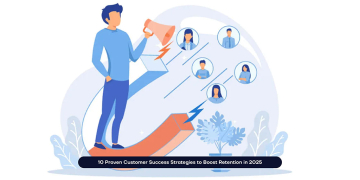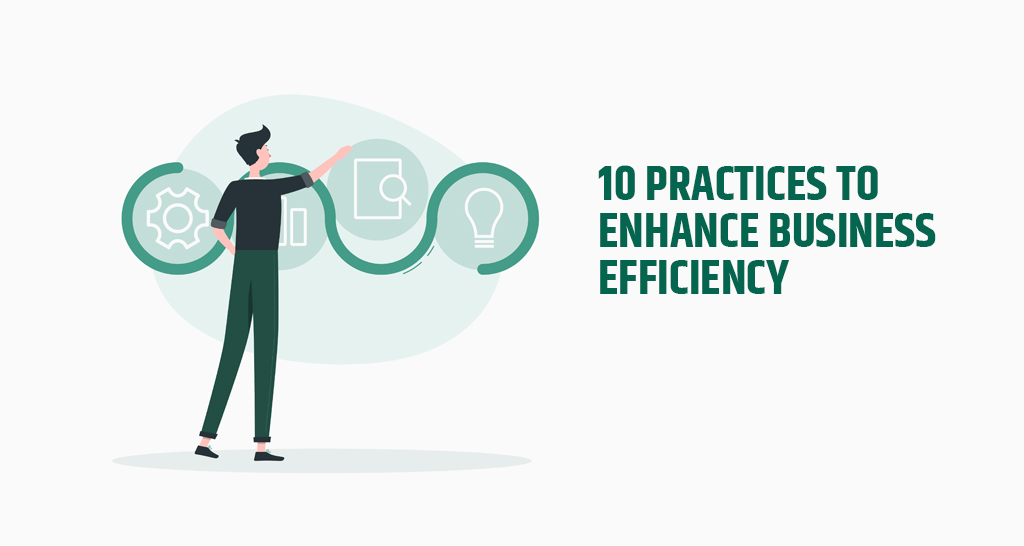In the 21st century, several business models and practices have emerged. Still, some companies use traditional models and practices. For example, some companies use the 1920s model wherein managers are seen as individuals in positions of power, controlling, intimidating, and whose main job is to plan, organize, and direct the organization. However, today’s employees and leaders need more agility, innovation, and lean skills. If they stick to outdated models and practices, it can affect the efficiency of the business. Luckily, some adjustments in the workplace can improve productivity and efficiency. In this blog post, we will learn about 10 practices to enhance business efficiency.
Embrace automation
Automation helps companies to gain an advantage over their competitors by eliminating operational inefficiencies. So, embracing automation is one of the 10 practices to enhance business efficiency. You can benefit from automating monotonous business tasks, like reducing errors, completion time, and operating costs. Automation helps free up employees’ time to concentrate on more productive tasks, which directly impacts business outcomes. Even though implementing innovative business automation tools might involve a big initial investment, they are worth it in the long run. This is because they help lower business expenses while increasing efficiency.
Provide your team with the right tools and skills
Give your team the right tools and skills to complete their tasks efficiently. Also, you can request senior managers to conduct practical on-the-job training for junior employees to demonstrate the nuances of specific tasks. If junior employees understand the end-to-end process, they can take on more responsibility, enhancing process efficiency at all levels. With practical training and knowledge transfer, you can also deliver team members the right tools to complete various tasks. For instance, implementing a customer resource management (CRM) tool can help enhance the efficiency and productivity of the customer service team.
Keep meetings short and focused
Poorly organized and inefficient team meetings waste employees’ time and reduce productivity. You can consider a short daily team meeting instead of long discussions to improve efficiency. These short meetings are known as scrums or huddles, usually of ten to 15 minutes, held in the morning, right before employees begin their work for the day. These meetings keep the team updated on other team members’ work. It also helps to identify potential bottlenecks and resolve any questions or problems of the team members.
Utilize task management software to track and improve productivity
Task management software is a helpful business tool that allows employees to monitor and track critical projects, deadlines, and other non-priority tasks. The software has an intuitive and friendly user interface that improves workplace efficiency by making it easy for team members to collaborate on tasks, even in different locations. It also assists employees in increasing their productivity and completing tasks on time.
Encourage open communication
Create a workplace culture that promotes open communication amongst all team members, including top-level management. You should ensure employees feel comfortable sharing their concerns, offering feedback, and asking questions. With open communication, employees feel valued at the workplace, increasing their productivity. Open communication also prevents miscommunication and allows for the sharing of feedback and ideas. This helps management identify existing processes’ flaws while pursuing available opportunities.
Create a disruption-free work environment
A distraction-free zone can improve the focus and efficiency of employees. So, ensure that employee cubicles are ergonomic and soundproof to help them focus on tasks without feeling mentally and physically tired. Here is another effective strategy to limit workplace disruptions. You can schedule long meetings on a specific day every week instead of conducting them randomly on all days. This can help employees get certain days to focus on individual tasks
without disruptions and can allocate other work days to brainstorm and collaborate with other team members.
Focus on single-tasking
Even though multitasking gives the illusion of doing several tasks, it often has the opposite effect on productivity and efficiency. Single-tasking, opposed to multitasking, is the process of focusing on only one job until you complete it satisfactorily. Single-tasking helps employees remain hyper-focused on a particular task. This helps them achieve more at the same time and improves the company’s efficiency in the long term.
Delegate tasks
If managers try to do everything themselves, it can lead to a loss of productivity, bottlenecks, and delays. Ensure that all team managers practice delegation at the workplace by assigning tasks to the right team members. This can help them free up from menial tasks, and they can focus on higher-level goals while making team members feel responsible and empowered.
Build trust in the workplace
Building trust at the workplace can create strong relationships between team members and managers. If team leaders trust their teammates to do their jobs responsibly, it creates a strong workplace culture where employees feel motivated to do their best work. It also helps them respond positively by providing valuable insights on critical tasks, services, and products, contributing to overall efficiency.
Concentrate on continuous improvements
Always remember that workplace efficiency is an ongoing process and requires a growth mindset. Even though efficiency is a personal trait, you can work on making it a part of the company culture by encouraging continuous improvements and constant learning at the workplace. So, encourage employees
to take risks and innovate. This can help you build a company culture prioritising efficiency and constant growth.
Last thoughts
All the above-mentioned practices are only one of the many roadmaps that can help businesses’ efficiency. It is better to take a trial-and-error approach when trying to improve business efficiency because, for some, all of these practices will work, but only a few are applicable for others. Before using any practice, you should assess the business environment and identify its strengths and weaknesses. This will help you choose the more appropriate one, enhancing business efficiency to achieve the targets faster and succeed in the competitive business world.






